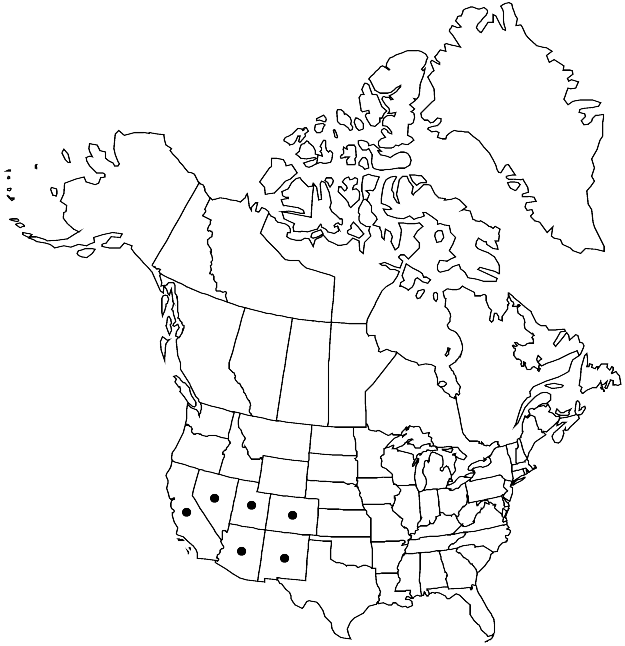Gemmabryum kunzei
Phytologia 91: 497. 2009.
Plants small. Stems 0.1–0.6 (–1) cm. Leaves concave, 0.3–0.8 (–1.2) mm; margins plane, limbidium absent; apex often hyaline with age, along with distal 1/3 of lamina; costa highly variable, not reaching apex in proximal leaves to long-excurrent in distal leaves, awn hyaline or sometimes green, smooth to weakly denticulate, usually 1/3–2/3 leaf length; proximal laminal cells abruptly quadrate, 1–2: 1; medial and distal cells short-rectangular to hexagonal, 12–18 (–20) µm wide, (2–) 3–4: 1. Specialized asexual reproduction unknown. Capsule with endostome segments pale tan, brown, redbrown, or rarely pale-yellow. Spores 8–12 (–14) µm.
Phenology: Capsules mature Apr–Jul (spring–summer).
Habitat: Dry sandy soil, rock, often calcareous, temperate arid to semiarid regions
Elevation: moderate to high elevations (500-2700 m)
Distribution

Ariz., Calif., Colo., Nev., N.Mex., Utah, c Eurasia (including Caucasus)
Discussion
Gemmabryum kunzei is a small, long-awned segregate of G. caespiticium, characterized by very small leaves, often hyaline distal lamina and awn, shorter laminal cells, and lack of a limbidium. The species is a nondescript, green, often sterile moss, and many collections may represent depauperate material of other small Bryum species. There are unusual, very compact cushionlike forms in semiarid stable environments (under ledges and in alcoves in Nevada and Utah) that may or may not represent G. kunzei.
Selected References
None.
Lower Taxa
"narrower" is not a number."narrow" is not a number.